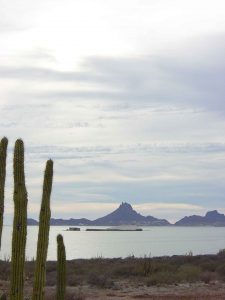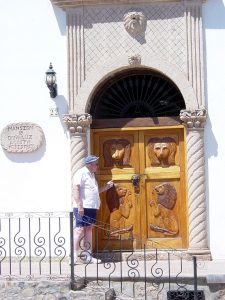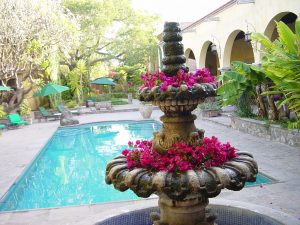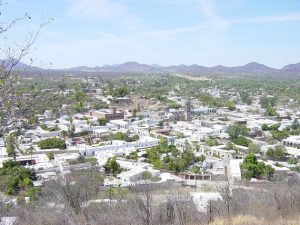
Story and photos by Bob Schulman
Check out a map of Mexico and you’ll see the state of Sonora just below Arizona. Now, look for a tiny speck down at the lower end of Sonora – literally at the end of the road. That’s Alamos.
Wander around this old Spanish mining town, and it’s easy to see why the local folks believe the mysterious German writer who used the name B. Traven wrote his famous novel, Treasure of the Sierra Madre, here.
A stroll along Alamos’ cobbled lanes, porticoed walkways and Andalusian courtyards takes you back to the 17th and 18th centuries, when the mines of the nearby Sierras made this city one of the richest spots on Earth. You half expect to see mining barons in silk shirts, velvet breeches and knee-high leather boots strutting off to count the day’s take.

You can imagine ladies in hooped skirts and white petticoats heading to afternoon teas. Silver-plated carriages, it’s said, once lined Alamos’ cobbled lanes like Rolls-Royces along Beverly Hills’ Rodeo Drive
The mines gave up so much silver that the town had its own mint. From there, the shiny stuff was loaded on mules, which went plodding off to Mexico City on a segment of the Royal Highway specially built to carry the loot from Alamos. The city also had its own silk factory – even silver barons had to dress for success – the worms having been cultivated in white mulberry trees imported from Japan along with gardeners and silk weavers.
The city sprung up in the 1680s as a bedroom community for the fabulously wealthy mining jefes (bosses).

Many of their mansions, handed down from generation to generation, are now owned by U.S. and Canadian expats who bought them as retirement homes or to turn them into hotels, inns and guest houses.
The dons and donas may be gone, but tourists can enjoy their legacies in 188 preserved buildings – everything from mansions and mills to the local jail – tagged as national historic monuments.
That’s a lot of history for a town this small (you can walk from one side of it to the other in 20 or so minutes). Along the way you might run across the home-turned-museum of Mexico’s old-time movie queen and Alamos’ most famous daughter, Maria Felix, known as “The Mexican Marilyn Monroe.” Elsewhere in the city are the former homes of American stars Mary Astor and Carroll O’Connor.

Sooner or later you’ll end up in the zocolo (the town square), the village’s most popular spot. Here, families drop by for picnics or to catch up on the latest gossip. At night, you might hear the sweet strumming of Mexican guitars from the square’s bandstand – mixed now and then with loud, thumping sounds.
Look close, and you’ll likely find the thump-a-thumps are coming from boom-boxes in the vintage jalopies of teenage boys and girls cruising the zocalo. The kids probably don’t know it, but they’re re-enacting a centuries-old mating ritual once done with carriages circling the country’s zocalos.
At Alamos, perhaps in silver-plated carriages.
Getting there: Many visitors opt to drive down from the U.S. and do some sightseeing along the way. The highway from Tucson takes you across the border at Nogales, then down Sonora to the state capital at Hermosillo and after that the beach resorts at Guaymas and San Carlos on the Sea of Cortes. When you get to Alamos you’ll have driven about 475 miles.
About B. Traven: That was the pen name of a German writer who came to Mexico in the 1920s. Beyond that, not much is known about him, not even his real name. Among his literary works were 12 novels, including some in which his main characters were German political activists who fled to Mexico in the 20s. He departed from that theme in his 1927 masterpiece, Treasure of the Sierra Madre.
